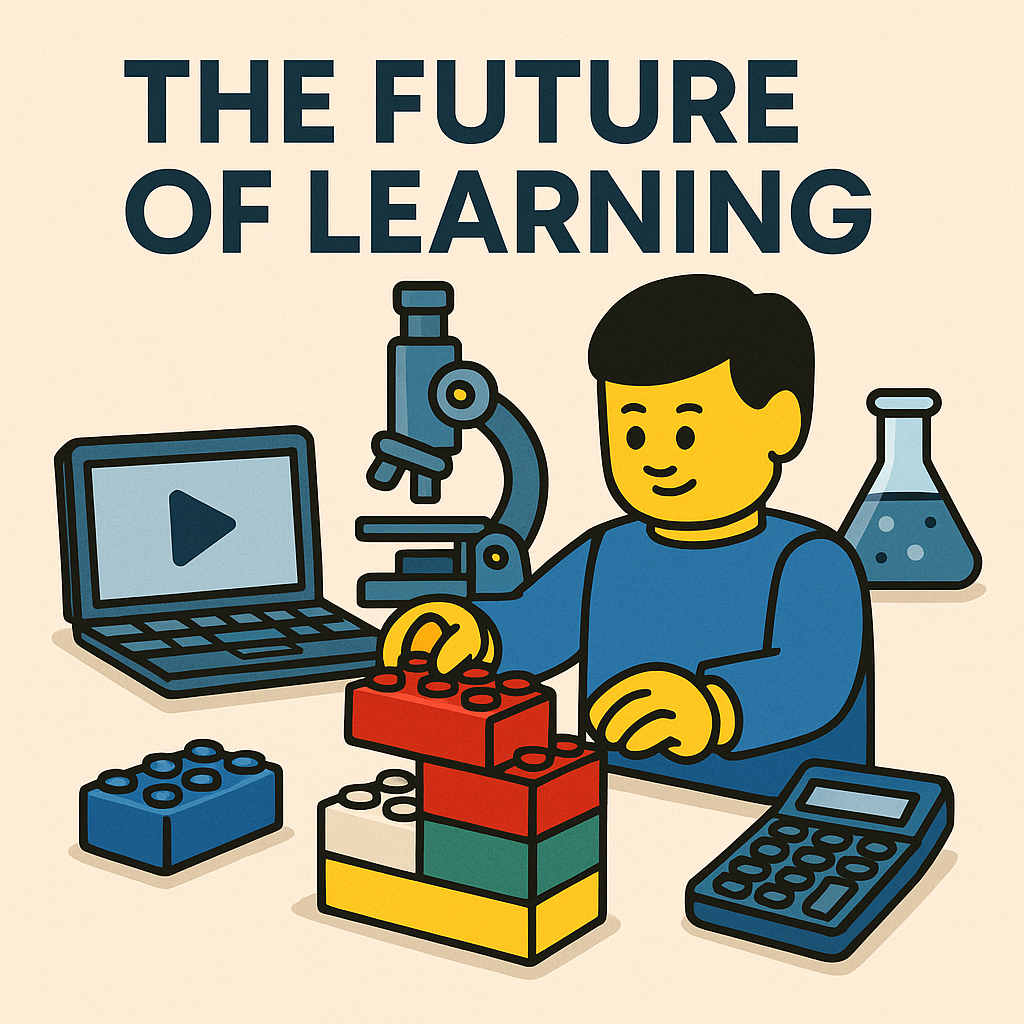Education moving forward
September 05, 2025
We’re at a turning point in education. For decades, schools have followed a model built around lectures, homework, and standardized testing. But today and moving forward, kids have something past generations didn’t. Powerful tools, accessible resources, and technology that let’s them learn in the way that works best… for them.
Every child learns differently, I think even before “learning styles” were a thing we all knew. Some absorb information best by listening, others by reading, and many by doing. Increasingly, I’ve seen kids and adults-alive thrive when they can watch recordings of lessons. Pausing, rewinding, or replaying until the concept clicks. How many times have you rewatched that video on how to unclog your drain? Three? Five? But you got it unclogged right?
Giving them access to multiple types of resources—videos, interactive software, calculators, or even AI tools opens doors for all kinds of learners. The tools alone aren’t enough though, of course. Students still need structure. A clear curriculum that outlines what they need to learn each day, week, and semester gives direction and purpose. The difference is that instead of forcing everyone to learn the same way, we provide multiple paths to the same knowledge.
Traditional education says class time is for lectures, and homework is where students practice. What if we flipped that? Imagine homework being the actual learning. Teachers will still be there teaching, sharing their knowledge, and all the million other things they do as part of their not-paid-well-enough jobs but it removes the weighted reliance on the “lesson” being the facilitator of learning. Students can then spend time watching videos, reading, experimenting with software, or using AI to guide exploration . Then, in class, students shift to hands-on application.
Class time becomes a workshop, not a lecture hall. Teachers act less like graders and more like mentors. They guide small groups, answer questions, and provide practical exercises where students “show their work.” Worksheets and problem sets don’t become obsolete—they’re just framed as a way for students to demonstrate understanding without relying on AI or tools to think for them.
For years students were told, “You won’t always have a calculator in your pocket.” But guess what? Now we do, along with access to the world’s accumulation of knowledge and much more. Phones, calculators, and AI are part of daily life. Pretending otherwise doesn’t prepare students for the real world. Instead, education should teach students how to use tools responsibly and how to source those tools or information from authentic, validated sources.
An analogy I use with my students is: Yes, you can use AI to explain how a nuclear reactor works, and it will produce detailed, scientific-sounding instructions. But do you know it’s correct? Can you validate it? Can you explain it in your own words or check the math behind it? That’s the difference between outsourcing your thinking and accelerating it.
The goal isn’t to ban tools but to teach students:
- Use tools to speed up your work, don’t use tools to do your work.
- Always know how to verify the results yourself.
In my humble opinion, the future of learning blends structure with flexibility, technology with mentorship, and independence with collaboration. Students get clear roadmaps of what they need to learn but also the freedom to choose how they learn it. Teachers transform into guides who nurture curiosity and problem-solving, not just graders of assignments.
By embracing this approach, we’re not just teaching kids facts and skills..we’re teaching them how to think critically, adapt to new tools, and validate information in a world overflowing with it.
That’s the real preparation for the future.
